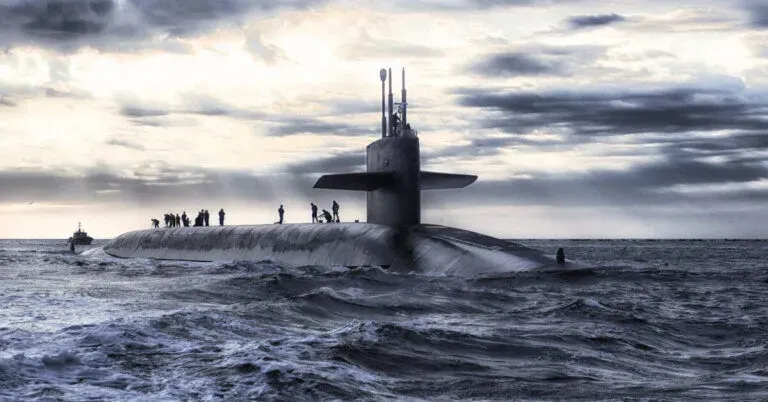Context:
Recently, India’s fourth nuclear-powered ballistic missile submarine (SSBN), codenamed S4*, was launched into water at the Ship Building Center (SBC) in Visakhapatnam.
More on the News
The launch of the S4* comes after the commissioning of India’s second SSBN, INS Arighaat, in August 2024, while the third SSBN, INS Aridhaman, is undergoing sea trials and is set to be commissioned next year.
Additionally, the Cabinet Committee on Security (CCS) earlier this month authorized the construction of two domestically built nuclear-powered attack submarines (SSNs) to strengthen deterrence in the Indo-Pacific region.
Naming Scheme: India’s first leased nuclear attack submarine, INS Chakra, was designated S1, setting the naming pattern for subsequent submarines:

- INS Arihant as S2,
- INS Arighaat as S3, and
- INS Aridhaman as S4.
- The newly launched submarine is labelled S4*, with its official name yet to be decided.
Key Features of S4*
- The newly launched S4* SSBN has approximately 75% indigenous content, showcasing India’s commitment to developing homegrown military technology.
- The S4 and S4* both have an improved reactor over earlier S2 and S3.
- The S4* is bigger and can carry a number of the K-4 submarine launched ballistic missiles (SLBM).
- While INS Arihant carries K-15 nuclear missiles with a range of 750 km, S4* carries the advanced K-4 SLBM with a 3,500 km range that was first tested in 2020.
- These missiles are designed to be launched through advanced vertical systems, enhancing the submarine’s operational capabilities and strategic deterrence.

Significance of S4* Development
- Development of ‘S4*’ marks a significant advancement as India strives to enhance its undersea nuclear armament capabilities.
- S4* along with other SSBN submarines will help India enhance its maritime security, especially in the wake of China’s deployment of nuclear submarines in the Indian Ocean region.
- These submarines give India a second-strike capability, which is vital for its nuclear deterrence strategy and no-first-use (NFU) policy, ensuring it can respond effectively even after a first-strike attack.

